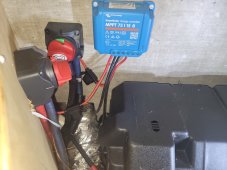FlyingAvocado
New Member
- Joined
- Jun 14, 2022
- Messages
- 14
Sorry to go slightly off topic... but I feel this is fairly related to the discussion at hand.
I am wondering if I can use an MPPT to charge a 24v system with an inexpensive 36~42V 1500W (or up to 1500W) power supply. The intention is to get a faster charge than I can get with something like the AIMS AC/DC charger, and a lower overall component cost while maintaining the ability to charge via solar or shore power as needed.
I am wondering if I can use an MPPT to charge a 24v system with an inexpensive 36~42V 1500W (or up to 1500W) power supply. The intention is to get a faster charge than I can get with something like the AIMS AC/DC charger, and a lower overall component cost while maintaining the ability to charge via solar or shore power as needed.




